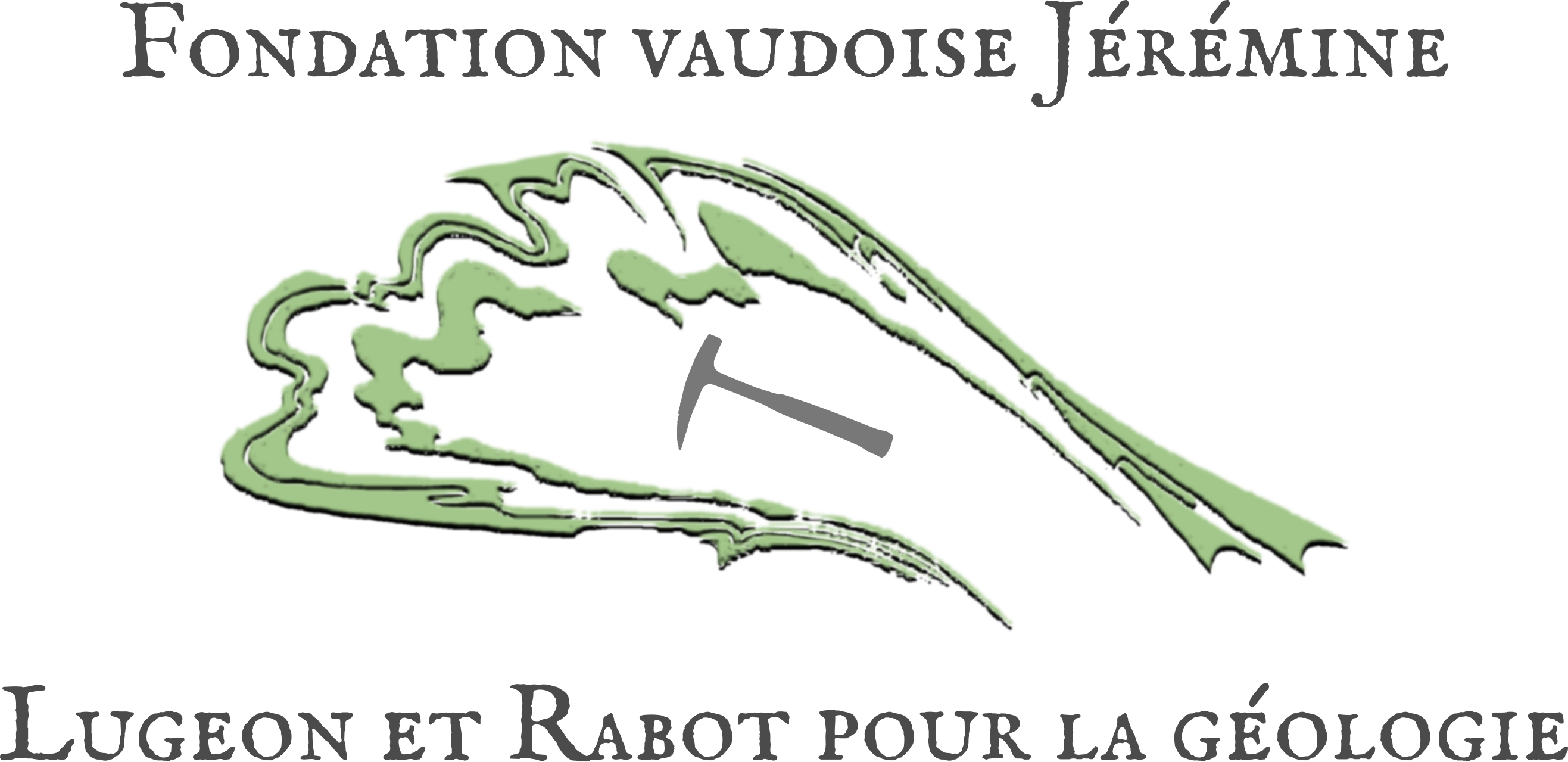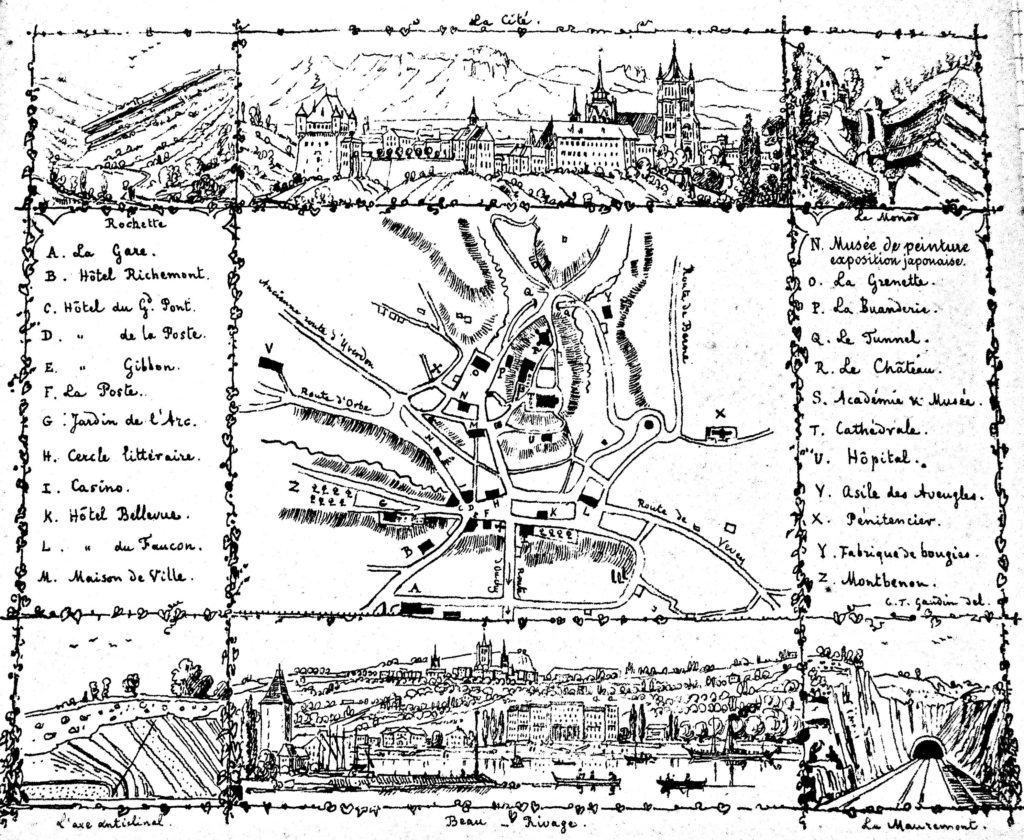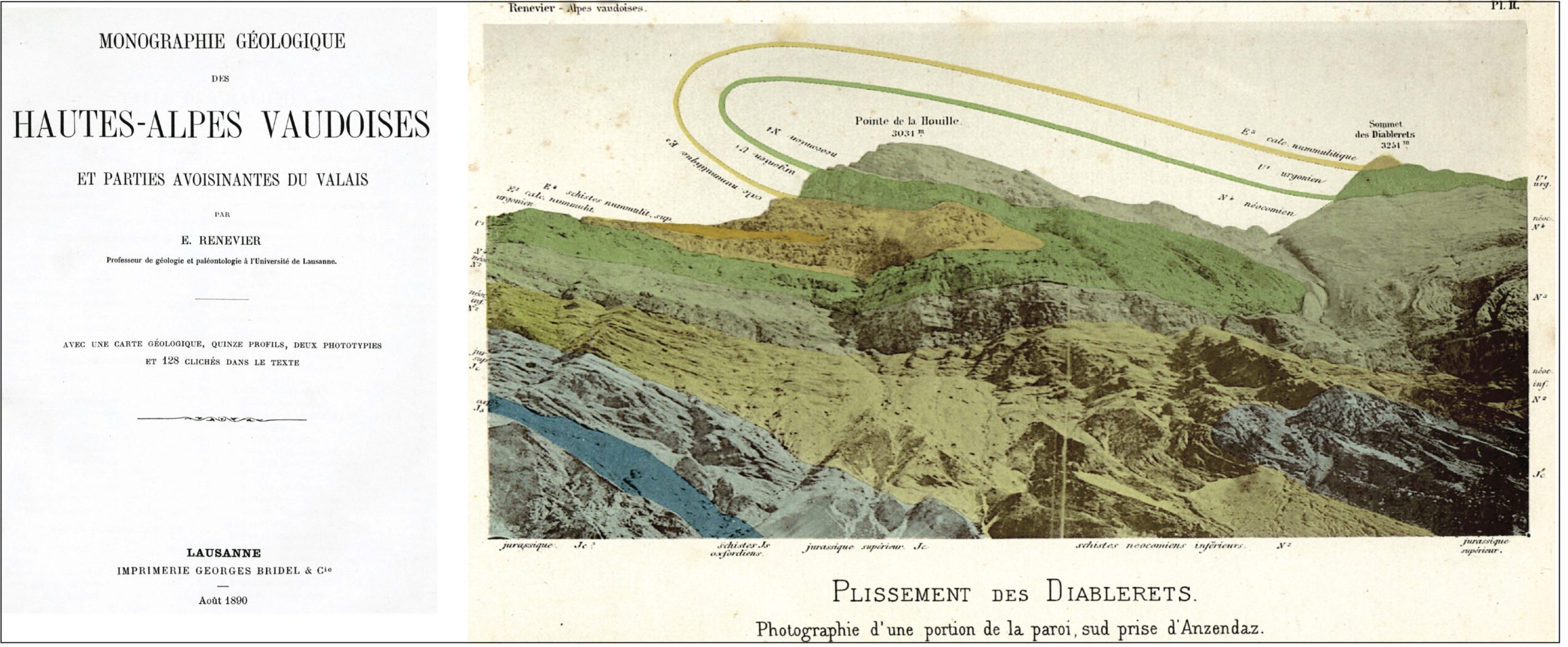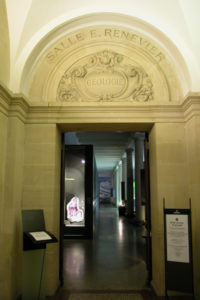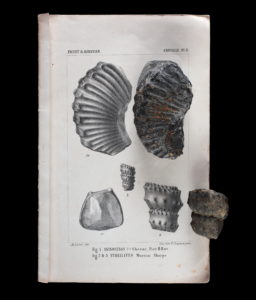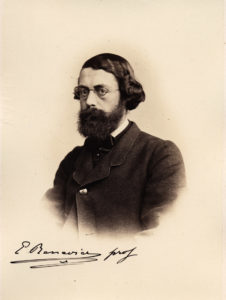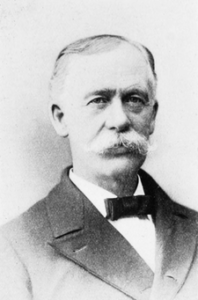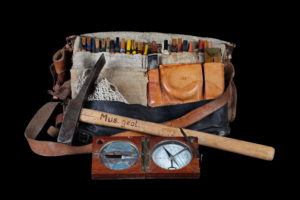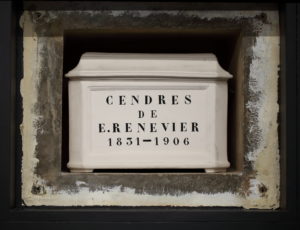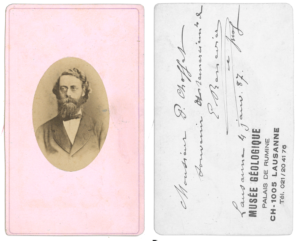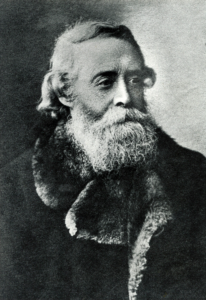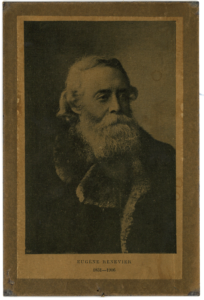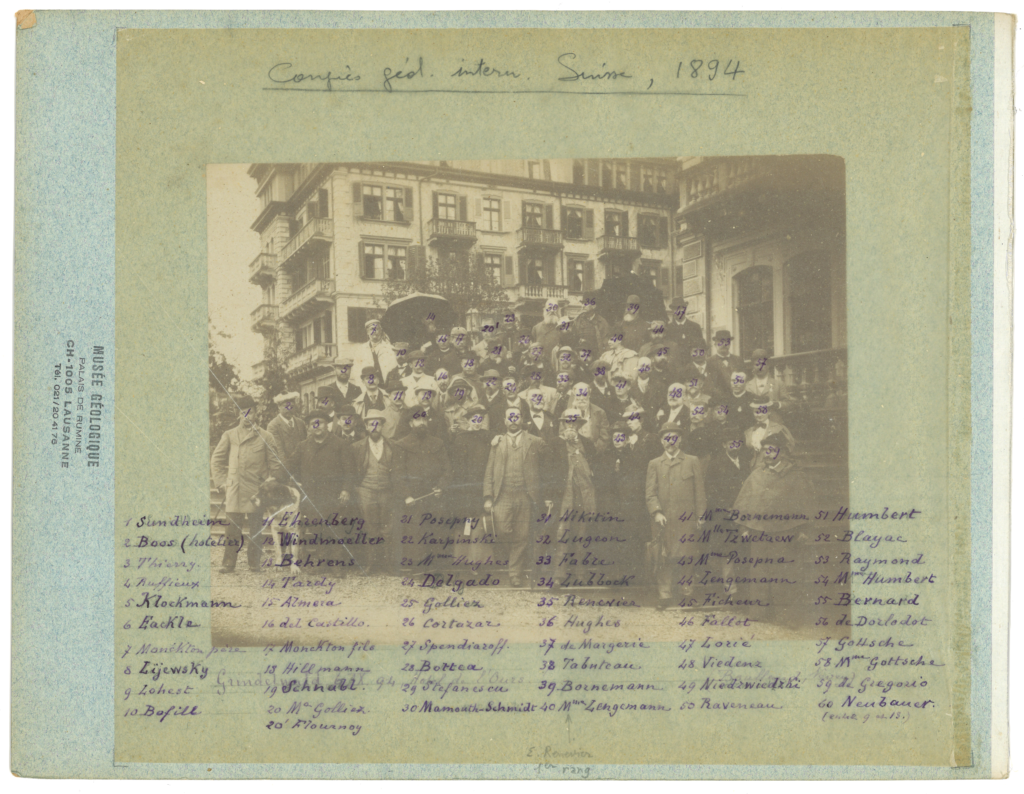Eugène Renevier (1831-1906), professor at the Academy and scholar from Vaud
by Aymon BAUD
Eugène Renevier, son of Charles, a very famous lawyer, was born on March 26, 1831 in Lausanne. His mother Henriette died when he was a child and his father remarried and took an active part in his son's education, first at the college and then at a boarding school in Stuttgart where he attended the Ecole Polytechnique and learned the rudiments of geology of the time. There he met the young Albert Oppel who was the same age and who was passionate about paleontology. During his vacations in Lausanne, at the age of 16, Renevier ventured into the Diablerets massif to look for fossils that he took to Stuttgart to exchange with Albert Oppel, who already had a very large collection and who was to become a famous German paleontologist.

On returning to Lausanne he was moved by a deep religious feeling and joined the free church of the time, while wishing to perfect his studies in geology and paleontology.
We will deal here with the academic teaching of geology from 1859 to 1906 and the geological naturalists
with whom Eugene Renevier surrounded himself. His religious commitment and the follow-up of the mission
in Africa that he created could be the subject of another presentation
At the age of 19, he presented his first paper to the Société vaudoise des sciences naturelles (SVSN) on the Jorat molasse. At the age of 20 he went to Geneva to attend the classes of the paleontologist François-Jules Pictet de la Rive and began to study the geology of the Pertes du Rhône region. In 1854 he went to Paris to attend the lessons of the paleontologist Edmond Hébert and published with him an important thesis on the Nummulitic fauna of the Alps.
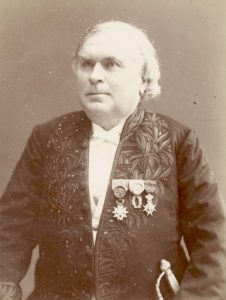


He returned permanently to Lausanne in 1855 and married in 1857 Mary (-Louise) Millimann from Boston, one year his junior. They had three daughters and two sons: Henriette born in 1857, Arnold in 1860, Louise in 1861, Alice in 1864 and Charles in 1865.

Renevier came back to the country armed with a large scientific baggage and preceded by a just reputation. At the Academy of Lausanne, a course of geology had been opened in 1851 and was occupied by Adolphe von Morlot. The place was taken.
In spite of his librist religious opinions, hardly in odor of sanctity in the governmental circles, the authorities understood all the interest that there was to attach the young scientist to the Academy. As early as 1856 he was given a course in zoology which was taken over in 1858 by Auguste Chavannes. In 1859, he was named extraordinary professor of geology.
From the beginning, Eugène Renevier surrounded himself with enthusiasts of geology and paleontology. First, in 1858, the physician Philippe de la Harpe (1830-1882) succeeded Charles Lardy as curator of the geology and mineralogy collections of the Cantonal Museum, located in the right wing of the Academy building. But in 1863, too busy, Philippe de la Harpe resigned from this position. It was then Eugène Renevier who, in addition to his position as extraordinary professor, took over this activity of curator which he kept until his death, offering Philippe de la Harpe the honorary title of assistant curator for paleontology. Philippe de la Harpe came to work and study at the Museum on a regular basis until his death in 1882.

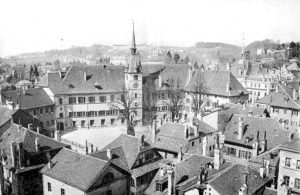
In 1861, he is charged, with an ad hoc committee, to host in Lausanne the annual meeting of the SHSN, or, translated from German by Société suisse des sciences naturelles (SSSN) which includes the program and plan below:
Four events will mark the fifty years of Eugene Renevier's teaching life:
- the opening of an independent Faculty of Sciences at the Academy, which separated from Letters and Sciences in 1869.
- the provision of premises for the geology and mineralogy collections as well as for teaching in the Maison Morave or Maison Gaudard (this last name was taken up in the 20th century) south of the Cathedral in 1874.
- the creation of the University of Lausanne in 1890.
- the opening of the Palais de Rumine in 1905, with the installation of all the dispersed collections of geology, paleontology and mineralogy and the opening of the new teaching rooms, just before his accidental death in 1906.
Faculty of Science and Technical Faculty
In 1869 at the Academy, an independent Faculty of Sciences opened, which separated from Lettres et Sciences. Eugène Renevier, who had only one course centered on mineralogy and geology, then three courses on petrography, was happy to teach paleontology and stratigraphy. In 1873, a new technical faculty was opened, with some of the teaching rooms located off the Tunnel, where he taught general and technical geology. From 1875 to 1877, Renevier was president of the Faculty of Sciences and, from 1877 on, he taught five hours of petrography, orography, paleontology and stratigraphy in the Faculty of Sciences and three hours of general geology in the Technical Faculty. Between 1851 and 1874, Renevier published nearly 60 scientific papers that dealt with the geology and regional paleontology of the Alps, the Plateau and the Jura, as well as the petrography and geology of visited regions such as Lake Como, the Montpellier region, Montalban and Tours, as well as notes on England and South Africa where he visited the Protestant missions.
And after fifteen years of fieldwork, Renevier published his first geological map of the Vaud Alps in 1875.

The Gaudard House
Provision in 1874 of premises for the geology and mineralogy collections as well as for teaching in the Maison Morave or Maison Gaudard (the latter name was taken over in the 20th century) south of the Cathedral.
Following a meeting of the Museum Commission, which was concerned about a dramatic lack of space for the collections, the State Council, which had just acquired the Moravian House south of the Cathedral, authorized the transfer of the Mineralogical Museum and the Botanical Cabinet to the first and second floors of the Moravian House, and the installation of the auditorium for the teaching of mineralogy and botany in this house. Following this transfer, the relocation of the collections marked the first phase of the constitution of the geology and botany museums, which were independent of the cantonal museum, also known as the Waldensian museum.




Works and colleagues
Eugène Renevier and before him Charles Adolphe von Morlot often stopped at Les Bévents sur Bex, at the home of Jean de Charpentier, author with Ignace Venetz of the theory of glaciations, including the famous Agassiz, and who received naturalists from all over Europe. In August 1877, a warm tribute will be paid to Jean de Charpentier during the meeting, in Bévents, of the Swiss Society of Natural Sciences.


During the meeting of the Swiss Society of Natural Sciences in Bex on August 21, 1877, it is at the invitation of Renevier, that a group of Swiss geologists participate in a commented excursion in the region. They decided to create a group of "excursionist geologists" with the help of statutes prepared by Renevier with a certain humor.
Very early on, Renevier was involved in geological surveys for major projects such as the Mont Blanc and Simplon tunnels. He first made a geological expertise report on the southern part of the Mont-Blanc tunnel project, then in 1877, he was charged by the Simplon railroad company to make, with two colleagues, M. Ch. Lory, professor at the Grenoble Faculty of Sciences, and M. A. Heim, professor at the Zurich Polytechnic, a preliminary geological exploration of the massif that the projected tunnel was to cross.
In 1880, he was commissioned by the French government to carry out surveys on the Thonon and Annecy sheets of the Geological Map of France. That same year, an unfortunate infection on the retina threatened to make him lose his sight. He is well treated but from that moment on, his visual acuity will be diminished.
Eugène Renevier was promoted to full professor on November 1, 1881 and thus had more than six hours of teaching in the Faculty of Sciences, with courses also for pharmacy students and always three hours in the Technical Faculty.
During his installation speech, he humorously remarks that among his forty colleagues there are a dozen who were his former students and he praises the authorities for this appointment when he could at most be listed in the Paleontological Museum and he ends with "if I am old, geology is young!" Also in 1881 he participated in the creation of the Swiss Geological Society, which followed the "excursionist geologists". He was president of the society for many years and was a member of the committee until his death in 1906. With his colleagues, he decided to publish in 1887 the first issue of the periodical of this society, the "Eclogae Geologicae Helvetiae" of which he was the first responsible editor. This periodical is still published today and only changed its name ("Swiss journal of Geosciences") after the 100th volume in 2006.
Also in 1881 he participated in the creation of the Swiss Geological Society, which followed the "excursionist geologists". He was president of the society for many years and was a member of the committee until his death in 1906. With his colleagues, he decided to publish in 1887 the first issue of the periodical of this society, the "Eclogae Geologicae Helvetiae" of which he was the first responsible editor. This periodical is still published today and only changed its name ("Swiss journal of Geosciences") after the 100th volume in 2006.
As early as 1880, Eugène Renevier surrounded himself with young collaborators who would later revolutionize the understanding of the Earth's history.
The first of them was Hans Schardt, a native of Basel who studied natural sciences in Lausanne and Geneva and won three competitions at the Lausanne Academy. Noticed by Renevier, he was called to work at the museum of Lausanne in 1881 and was enrolled that same year in the committee of the Swiss Geological Society.
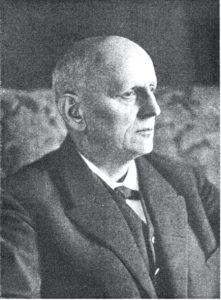
Schardt and Renevier remain in contact for the cartography and for the thesis of the "Études géologiques sur le Pays- d'Enhaut vaudois" done at Alphonse Favre in Geneva, then for the follow-up of the publication of "Description géologique des Préalpes du canton de Vaud et du Chablais". In 1890, Renevier offers to Schardt, who is, since 1883, a master of science in Montreux, a position of privat- docent at the University to teach physical geography of the mountains of the world. Schardt taught this subject until 1894, when he was called to teach at the University of Neuchâtel.

Maurice Lugeon, then a young teenager, was received at the Museum in 1882 by G. Leresche, a botanical preparator, who taught him to determine plants and minerals. After the departure of Hermann Goll in 1883, Renevier hired a new preparator, the young naturalist Théophile Rittener, who was already working under his direction as a collaborator in geological surveys in Savoy. Thus, after Leresche, it was Rittener who took the young Lugeon into the field and gave him a taste for the observations in which he would excel throughout his life. But Lugeon's parents, considering natural science studies too costly, placed him in an apprenticeship at a bank in Lausanne.
For his bosses, he was a poor apprentice because he spent his time preparing labels for his collections or for his herbarium, or even reading, furtively, books on natural sciences. His parents gave up and luckily in 1886, a position as a preparator at the Museum became available, and the position was offered to Lugeon, who was then just 18 years old and had just started the Gymnasium! Passionate, he prepared his first communication to the Société vaudoise des sciences naturelles on fossil plants discovered in the Lausanne molasse, which he presented at a meeting on January 23, 1889.


The creation of the University of Lausanne in 1890: The transformation of the Academy into the University of Lausanne, inaugurated in May 1891, was the occasion for a great popular celebration. For geology, it brought a new development with the opening of two distinct laboratories and two teaching chairs.

The geology laboratory was then created in a room of the Gaudard house in connection with the collections of the Museum. The mineralogy laboratory was installed, along with the zoology laboratory, in the Sollichon building, rented by the State of Vaud. Golliez is the extraordinary professor, in the recently named "École d'ingénieur". Renevier provided him with the Museum's collections for the teaching of mineralogy and petrography, as well as the books specialized in this branch.

Renevier was relieved, because at the age of 60 he was freed from some of his heavy teaching and could commit himself more to the continuation of his publications and their communication, as well as to the preparation of the congresses of the years to come. In 1890, he finally published his long-awaited monograph of more than 500 pages on the Hautes Alpes vaudoises, which included his first large geological map published in 1875.
He was also able to better prepare the plans for the installation of the laboratories and collections in the Rumine building to be built and for this purpose he was summoned, in August 1891, to a meeting presided over by the then Head of the Department of Public Education, Mr. E. Ruffy, to discuss with the architect André the plans for the distribution of the Museum and the teaching.

For Renevier, 1894 was a great year: not only did he lead the International Geological Congress in Zurich, but he also organized with Golliez one of the prestigious excursions through Switzerland. In addition, in front of a large audience, he had the opportunity to present one of his major works, the result of more than thirty years of work, the "Geological Chronograph" with its thirteen tables of sedimentary terrains, accompanied by a 170-page explanatory text and a lexicon of more than 3'000 terms examining the known stratigraphy of each continent.
In 1896, Renevier received the title of doctor honoris causa from the University of Zurich. At 66 years old, he reduced his teaching to stratigraphy and paleontology, first of vertebrates, then of invertebrates. Appointed at 67 years old Rector of the University of Lausanne, he announces: "You will have at your head a Rector fossilis instead of a Rector magnificus"!


In 1898, Hans Schardt published a landmark article with 104 pages and two colored sections on the allochthony of the Prealps and the Breccia, both of which had a distant southern origin and were deposited on a folded native. It is a revolution in the understanding of mountain ranges.
In 1902, Lugeon showed in a 100-page synthesis that the northern front of the Alpine chain, from the Arve valley to Salzburg, is formed of large superimposed nappes that completely cover the true autochthonous front, hidden at depth. This synthesis, extended to the Carpathians and then to the Tatras in Poland by Lugeon & Termier, during the International Geological Congress in Vienna in 1903, was to bring about a real revolution in the geological sciences and was to have a lasting effect on the understanding of all Alpine tectonics.
As he expressed it in his inaugural lesson of technical geology at the new School of Engineering, Golliez, shows a sustained interest in geology applied to major works.
He was given a number of opportunities: on the one hand, the fantastic project of a mountain railroad to the summit of the Jungfrau, for which he supervised the route and made the geological sections, and on the other hand, the study of the project and the follow-up of the Loetschberg tunnel. For the first, studies began in 1894, but he had to wait ten years for the construction to begin and the inaugural train arrived at the Jungfraujoch station on July 31, 1912. For the second, after 6 years of geological studies, the decision was made on June 27, 1904, to break through the tunnel based on his findings. The tunnel was inaugurated on June 19, 1913, a few months before his death.
But already in 1909 he was decorated with the Legion of Honor by the French government, for his diplomacy and his remarkable work in progress.


Eugène Renevier and the Palais de Rumine
For Lausanne geology, 1905 was a very important year. First of all, it was the arrival of new students who came to Lausanne to prepare their thesis in geology, among them Émile Argand, Alphonse Jeannet and Ferdinand Rabowski. With them, the impact of Lausanne on the earth sciences was going to increase on a Swiss and European scale! It was also the end of the construction of the Palais de Rumine and the beginning of the relocation of the laboratories, the Scientific Museums and the Cantonal Library. The transfer of the collections from the Gaudard house to the Palais de Rumine was supervised by Renevier, and carried out by Lugeon with the preparator Lador and the new assistants, Argand, Jeannet and Rabowski.
On November 3, 1905, the Palais de Rumine opened to the University.

On May 5, 1906, Renevier accidentally fell down an open elevator shaft at home and died the next day, ten days before the celebration of the 50th anniversary of the beginning of his teaching at the Academy and the awarding of the title of doctor honoris causa of the University of Geneva, which was to take place posthumously. At Lugeon's request, the large exhibition room devoted to geology and stratigraphy, which has just been arranged in the Palais de Rumine, will bear the name of "Renevier", engraved on the entrance pediment. The other large room dedicated to paleontology will bear the name of "De la Harpe", also engraved. Through his perseverance and constant work, Renevier succeeded in transforming a small geological cabinet, which was part of a museum at the beginning of the 19th century, into a great museum of geological sciences, independent and of international reputation, superbly housed in the Palais de Rumine since 1906.

It should be noted that the Simplon Tunnel Advisory Commission was chaired by Renevier. On February 24, 1905, the commission was informed that the two tunneling teams had joined forces and that there would be great celebrations for the inauguration of the tunnel, including one in Lausanne in 1906. But this one, scheduled, took place just 3 weeks after Renevier's death.
On the left, the Simplon Gate, donated and exhibited in the north wing of the Palais de Rumine; on the right, the Atrium of the Palais and its fountain, with in the upper part the 110 m long room in which the great Simplon inauguration banquet was held, at the invitation of the Federal Council, with its 776 guests, on May 28, 1906. This room was later occupied by the Museum of Zoology and the two rooms below, with the collections of paleontology and geology, were named after De la Harpe and Renevier in memory of these two Vaudois scientists.
Summary of the Renevier years, from 1856 to 1906
To summarize Renevier's scientific career, it can be said that with nearly 140 publications, it is obviously very extensive and radiant. Renevier's main concern was to was the classification of rocks. His first table of sedimentary terrains, published in 1873-1874, classifies the main terrains then known in Europe according to 79 well-defined stages based on their characteristic fossils. This hierarchy of classification, according to facies on the one hand and time on the other hand, itself based on evolution, will enter into the discussions of many congresses in which Renevier will play a very active role.
 Through a large-scale work, he established a reasoned international scale of geological time. His "Geological Chronograph", presented in 1894 in Zurich and endorsed by the Congress, was published in 1897. This new time scale will have a great impact in the international community and the published results will serve as a standard for the teaching of stratigraphy until today.
Through a large-scale work, he established a reasoned international scale of geological time. His "Geological Chronograph", presented in 1894 in Zurich and endorsed by the Congress, was published in 1897. This new time scale will have a great impact in the international community and the published results will serve as a standard for the teaching of stratigraphy until today.
Through its involvement in regional geology and in regional, national and international scientific bodies, Renevier was able to attract new young forces, some of whom would become leading scientific personalities, recognized well beyond our borders. Among them, we introduced Hans Schardt and Maurice Lugeon and for applied geology, Henri Golliez. Together with the newcomer Emile Argand, they will bring about a profound revolution in international geological science and make the Lausanne School shine.
One of the great statues on the entrance porch of Lausanne Cathedral, that of Isaiah, represented according to experts as David Lugeon, sculpted by his son Raphael, Maurice's brother, bears a striking resemblance to the portrait of Eugène Renevier. We know that the sculptor often crossed paths with Renevier, his brother's revered teacher, and that the professorial stature given to his statue is more that of Renevier than that of his father.

Documentation
- Pictet & Renevier, Description des fossiles du terrain aptien de la perte du rhône et des environs de Sainte-Croix, 1854-1858.
- Renevier, Tableau des terrains sédimentaires qui représentent les epoques de la phase organique, 1874.
- Renevier, Projet Excursions Congres Helvetique, 1877.
- Renevier, Les Anthracotherium de Rochette,1880.
- Renevier, Notices géologiques et paléontologiques sur les Alpes vaudoises, 1880.
- Renevier, The Ichthyosaurus of the Lausanne Museum, 1885.
- Renevier, Monographie géologique des Hautes-Alpes vaudoises, 1890.
- Renevier, Speech of the President of the Congress, 1894.
- Renevier, Geological Chronograph, 1894-1897.
- Renevier, Notice sur l'origine et l'installation du musée géologique de Lausanne, 1895.
- Renevier, Summary of the geological chronograph, 1897.
- Renevier, International Commission on Stratigraphic Classification, 1899.
- Renevier, Pictet Notices geologiques et paleontologiques sur les Alpes vaudoises, 1866.
- Renevier Letter to Prof. B. Studer, 1882.
- Renevier Fossils
Obituary
Press reviews:
- The Review of 04.05.1906.
- Nouvelliste vaudois - liberal democratic newspaper of 4.5.1906.
- Tribune de Lausanne and Estafette of 4.5.1906.
- Feuille d'avis de Lausanne of 5.5.1906.
- Nouvelliste vaudois - liberal democratic newspaper of 5.5.1906
- Tribune de Lausanne and Estafette of 5.5.1906.
- Tribune de Lausanne and Estafette of 6.5.1906.
- The Review of 7.5.1906.
- Nouvelliste vaudois - liberal democratic newspaper of 7.05.1906.
- Tribune de Lausanne and Estafette of 8.5.1906.
- Feuille d'avis de Lausanne of 9.5.1906.
- Feuille d'avis de Lausanne of 10.5.1906.
- Journal of Château-d'Oex of 12.5.1906.
- Feuille d'avis de Montreux of 18.5.1906.
- Nouvelliste vaudois - liberal democratic newspaper of 9.6.1906.
- Feuille d'avis de Lausanne of 18.6.1906.
- The Review of 3.11.1906.
- Feuille d'avis de Vevey of 9.1.1907.
- The Review of 9.1.1907.
- Feuille d'avis de Lausanne of 8.6.1907.
Obituaries and tributes:
The stupid death of Eugène Renevier by Robin Marchand, Curator at the Cantonal Museum of Geology, Lausanne, May 2021:
- The academic teaching of geology in Lausanne from 1832 to 1906: Eugène Renevier and the geological naturalists, A. Baud, 2019.
- Bulletin technique de la Suisse romande, 1906, Necrology of Eugene Renevier.
- CIFM, 1906, Orbituary Professor Eugene Renevier.
- Eclogae Geologicae Helvetiae, 1907, Necrology of Eugene Renevier.
- Franks Trumpy, 2005, The Sixth International Geological Congress- Zürich, 1894.
- Freymond, 2012, Eugène Renevier, the Lausanne school of geology and stratigraphy - Geoblog.
- Jaccard, Lugeon, 1906, Invitation 50th Anniversary Teaching Renevier.
- Lugeon, 1907, Obituary on Eugène Renevier
- Vai, 2004, The Second International Geological Congress, Bologna, 1881.
